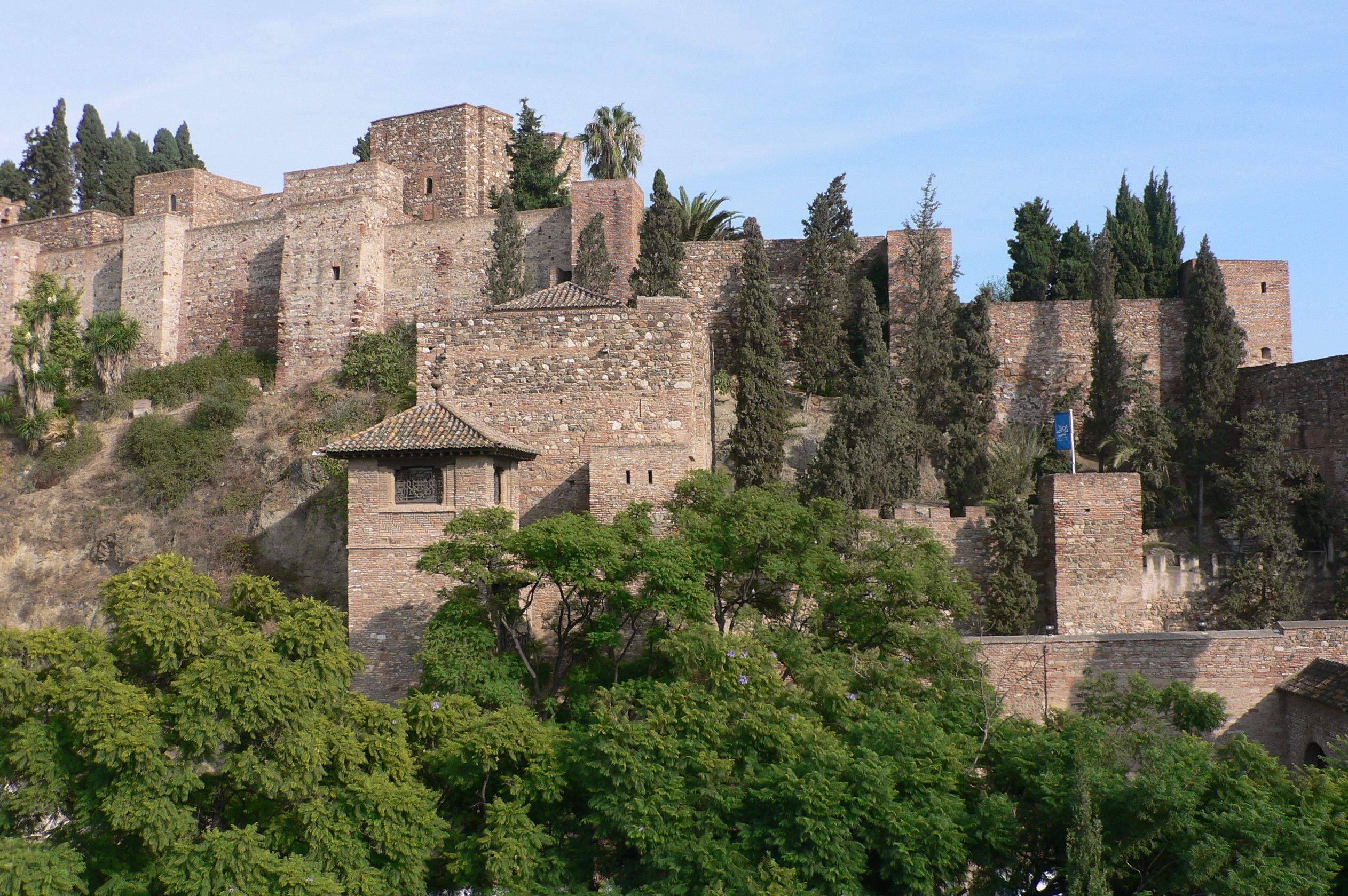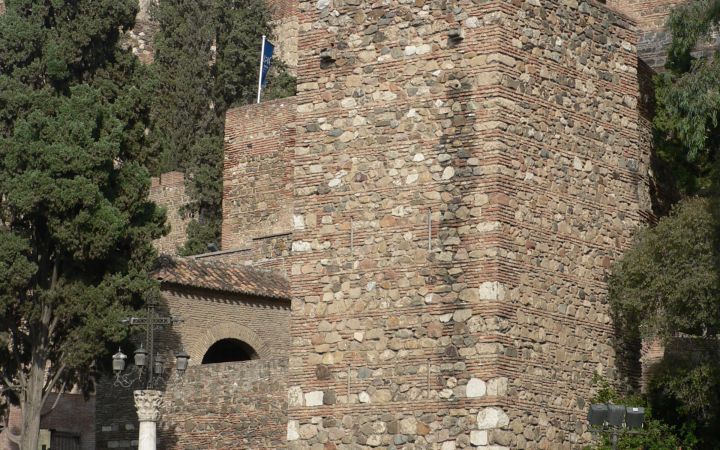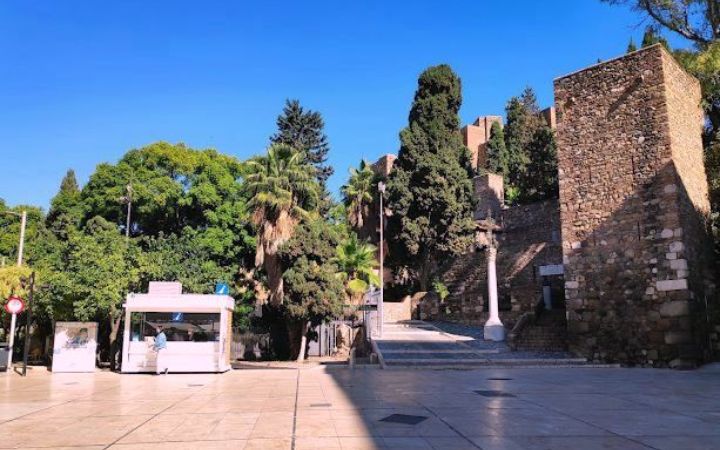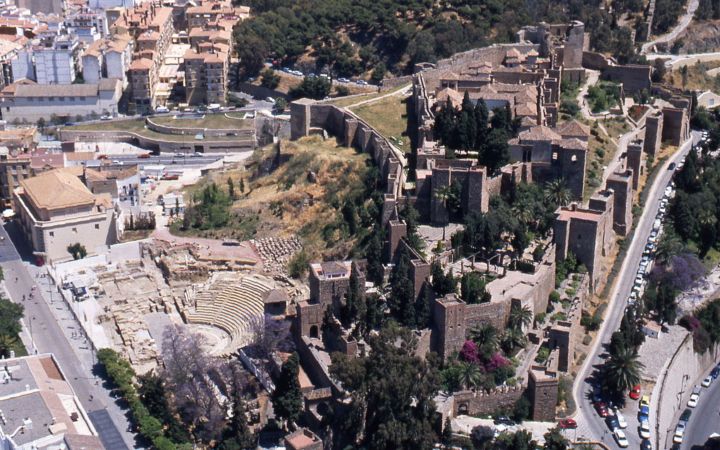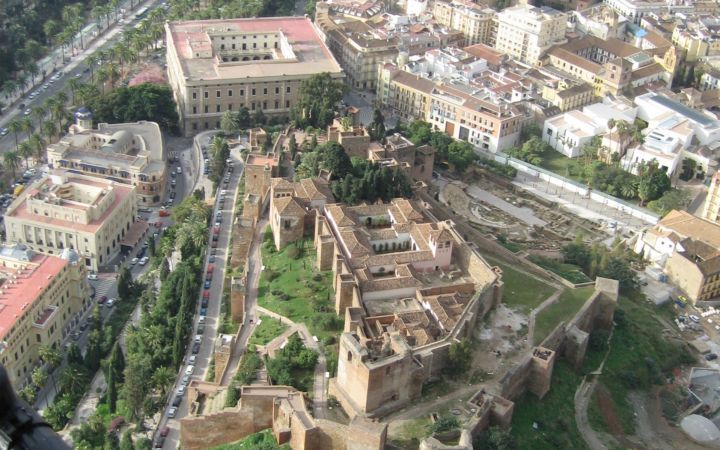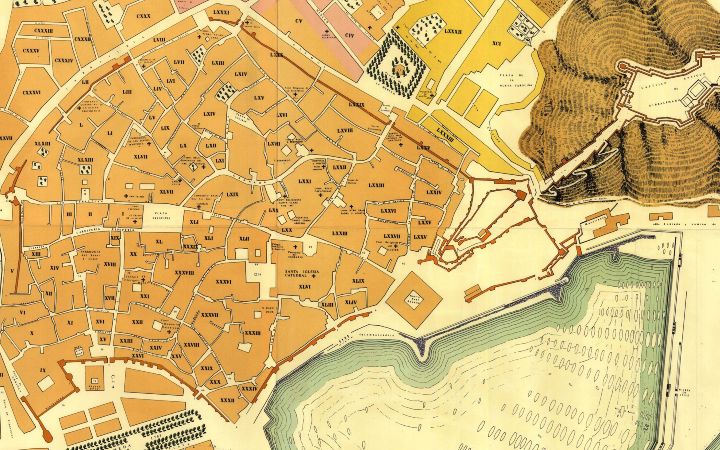PUNTO DE INFORMACIÓN TURÍSTICA, CALLE ALCAZABILLA-PLAZA DE LA ADUANA
La Alcazaba, palacio y fortaleza hispano-árabe (localizada en la acrópolis o ciudad alta) como sede del aparato administrativo y político-militar de la dinastía Hammudí, fue fundada en el siglo XI.
Como parte del conjunto defensivo de la ciudad, la Alcazaba (al-Qasba = fortaleza urbana) está también constituida por dos recintos amurallados. Su acceso desde la ciudad se complejiza con un conjunto de murallas y puertas, constitutivas de un primer obstáculo para quien quisiera penetrar por la fuerza, denominadas “fortificaciones de ingreso”. Así, por la acumulación de obstáculos defensivos, este conjunto puede considerarse la obra militar más significativa de AI-Andalus, únicamente comparable con los castillos edificados por los Cruzados en Siria.
Exenta del trazado de las fortificaciones de ingreso y unidas a estas por un adarve, destaca la Torre Albarrana, que se adentraba en la ciudad (entre la actual calle Alcazabilla-Plaza de la Aduana) cumpliendo con una función defensiva y de control del acceso a la fortificación desde todos los ángulos. En sus esquinas es posible apreciar grandes sillares procedentes del cercano Teatro Romano.
Tras la conquista cristiana prima su carácter militar hasta el siglo XVIII, enmascarándose bajo una urbanización popular que llega a degradarla fuertemente hasta mediados del siglo XX en que la ciudad inicia su recuperación monumental.
TOURIST INFORMATION POINT, ALCAZABILLA STREET- ADUANA SQUARE
The Alcazaba, a Hispano-Arabic palace and fortress located in the acropolis or upper city and the seat of the administrative and political-military apparatus of the Hammudí dynasty, was founded in the 11th century.
As part of this defensive complex, the Alcazaba (al-Qasba as urban fortress) consists of two walled enclosures. Its access from the city is made more complex by a set of walls and gates, known as "entrance fortifications", which constitute a first obstacle for those who wished to enter by force. Therefore, due to the accumulation of defensive obstacles, this complex can be considered the most significant military construction in Al-Andalus, comparable only to the castles built by the Crusaders in Syria.
Exempt from the layout of the entrance fortifications and joined to them by a parapet, the Albarrana Tower stands out, which entered the city (between the current Alcazabilla Street and the Aduana Square), fulfilling a defensive function and controlling the access to the fortifications from all angles. In its corners it is possible to see large ashlars from the nearby Roman Theatre.
After the Christian conquest, its military character prevailed until the 18th century, masking itself under a popular urbanisation that became heavily degraded until the middle of the 20th century, when the city began its monumental recovery.

